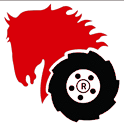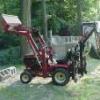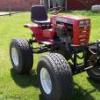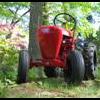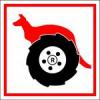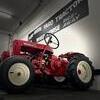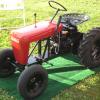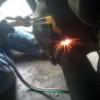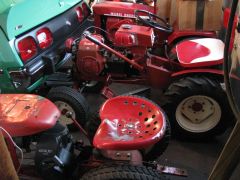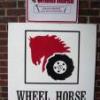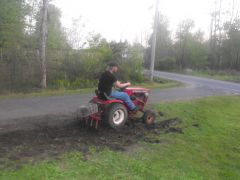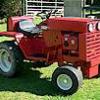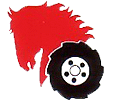Leaderboard
-
in all areas
- All areas
- Markers
- Marker Comments
- Marker Reviews
- Articles
- Article Comments
- Article Reviews
- Classfieds
- Classified Comments
- Classified Reviews
- Wiki's
- Wiki Comments
- Wiki Reviews
- Blog Entries
- Blog Comments
- Images
- Image Comments
- Image Reviews
- Albums
- Album Comments
- Album Reviews
- Files
- File Comments
- File Reviews
- Posts
-
Custom Date
-
All time
November 28 2011 - November 13 2024
-
Year
November 13 2023 - November 13 2024
-
Month
October 13 2024 - November 13 2024
-
Week
November 6 2024 - November 13 2024
-
Today
November 13 2024
-
Custom Date
05/23/2013 - 05/23/2013
-
All time
Popular Content
Showing content with the highest reputation on 05/23/2013 in all areas
-
3 pointsMaybe someone is telling you to kick back, grab a chilly one...smile and wave back for a change. Might be you're just overdue for a break today.
-
2 pointsya its about 10 lbs, but w/ the flag off its 47" long. so it would have to be at least a 48" x 6 x 6. i think you can have UPS come rite to my house and pick it up and diliver it to you... if you can have them pick it up that would be easyest, if not if you find out how much it will be and send it to me i can drive it to my local ups store and have it sent out
-
2 pointsI say if you are going to change the color you need to go all the way with it. I don't think much of the that two color scheme. Why not get wild with it and make it truly one of a kind. I realize this isn't a W/H or a Cub but this is a one of a kind Craftsman I got carried away with.
-
2 pointsIf you want it stock go yellow, if you want it custom go red. Red looks sweet on a Custom Cub.
-
1 pointHere's my homemade sod cutter. I was going to get a single bottom Brinly plow, but I really just wanted to remove the sod, so I didn't have to till the grass and roots it into the soil for our garden. It worked pretty good. Cool thing is that I don't need a 3 point hitch: https://www.facebook.com/video/video.php?v=10201190038741917¬if_t=video_processed
-
1 pointPicked up my first wheel horse. Its a 414-8 with about 875 hours on it. Its not mint but I love it. Runs great just needs a tie rod, seat, and the choke cable is frozen. Very happy to be a part of this community.
-
1 pointIf I recall on the 520 fuse block two of the fuses (20amp & 30amp I think.. ) are connected together on one side across the inside of the fuse holder via a common plate (two tabs are joined together).
-
1 pointI am picking this up this weekend from a co worker ive owned alot of horses but nothing like this its a 416-8 with an original kwik way loader tags from wh are on it! Only thing im not in love with is the onan i probablly will end up putting just the tractor up for trade for something with a kohler. Itll be a.blast to use it im sure.
-
1 pointWell I mowed the lawn today. Seems like it took twice as long!! Full stops. No grinding. I guess I get my bad habit from driving trucks and cars. I don't think I ever stopped when going from Reverse to First. Never got any grinds either. Musta been the synchronizers.
-
1 pointSo far I am a complete failure at downsizing....I loaded up 4 refurbished push mowers that needed to be delivered and the wife says that she is so happy to see me getting rid of some of my "stuff" what she didn't notice was that I returned home with 6 trade in push mowers, 1 garden tiller, 1 snowblower, 3 string trimmers, and a leaf blower.
-
1 pointAlmost looks like a resto canidate to me...
-
1 pointI find this url very helpful workin' on decks. http://www.partstree.com/parts/?lc=Toro+Consumer&mn=e5-48sc01
-
1 pointcompare your defect with the results shown here http://pc.dupont.com/dpc/en/US/html/visitor/s/trouble/PDSG_Home.html http://www.aerospaceonline.com/doc/Improved-paint-durability-on-Boeing-commercia-0001 orange peel and a really bad case of fisheye may look similar - usually fish eye is seen in just a few small spots over a project where as orange peel is a function of improper gun / paint performance. True fisheye is improper surface prep and usually results in "craters" in the paint. The bottom of these craters usually show the surface you sprayed on. Wet sanding would have to be done almost down to the surface to remove a true fish eye defect. Orange peel can be corrected by wet sand whereas the paint near a fish eye usually has to be taken down to the surface and feather edged into the remainder of the paint job. My own experience with true fish eye vs true orange peel suggests a cross section of the defects would look something like the diagram below. The yellow contaminant will usually "push away" the top coat and refuses to meld with it. The result is a true crater or fish eye vs a rough orange peel surface.
-
1 pointI wonder how well it would work using the mid tach and a solid link for down pressure? That could eliminate the need for a friend to stand on it, although that looks like fun too.
-
1 pointYou also might consider a full tranny swap as well, depending on what you find for parts. Looks like the bearing in the first picture is missing a few balls as well. Like Steve said, the gears, and shafts aren't as bad as you might think from first glance. You might want to take a look at the bottom of the shifter shaft as well. That could be worn a bit as well. BTW-- Pretty cool to see you diving right into it.
-
1 pointDid you ever make the purchase? I'm a little late on the thread... When buying an air compressor, make sure you get one with a decently high max psi. I say that because you're going to want to run a pretty high pressure to shoot framing nails in, and if your compressor doesn't kick on until the tank drops below 100 that won't cut it. I wouldn't buy a compressor with a max psi less than 150psi, and that rules out most of the harbor freight compressors. I'm a carpenter by trade, and I've got to say, I'm impressed by the Bostitch TrimAir compressor. It's about 2.6cfm at 90psi if I'm remembering right, but the tank is TINY. Doesn't take any time at all to pump back up, and it will keep up with one gun doing anything you want to do unless you're a fast framer. I use one at work all the time, it's crazy light weight, and it has held up really well. As far as nail guns, the problem with most of the homeowner grade guns is they're really bulky. A Senco framing gun is a lot better balanced than any Bostitch framer I've ever used, which may still be way ahead of a Harbor Freight gun. You will want something you're comfortable with, keep in mind that your safety is a big issue. If you shoot a 3 1/4" nail at 120psi, it WILL penetrate any body part it heads toward. If it's a finger, it will probably go in one side and poke out the other. Because of the safety issue, I would buy one that uses paper tape nails instead of wire weld. If a nail DOES go through your finger it will come out a lot easier if there's not a wire attached to it. Generally the wire weld nailers have less angle than paper tape nails. For trim guns, I've always really liked the Bostitch stuff. If you buy the TrimAir compressor I mentioned they usually have a package that comes with a couple of trim guns. You will want a 16ga nailer to install base and casing. I only use an 18ga to nail the thin side of the casing to the door jamb. I don't care for 18ga nailers that shoot 2" nails, they just bend over and don't hold trim well. I like a brad nailer (18ga) that will not fit a nail longer than 1 1/4", because they tend to be a lot more accurate. I run a Senco 15ga trim gun instead of a 16ga, and it takes angled nails instead of straight ones. It's nice for getting in corners and such, but I don't know if I've ever run into something I couldn't do with a straight nailer instead. I mainly like it because it has the capability of 2 1/2" nails, which you will not need unless you're planning on putting 2 layers of drywall over something (commercial work).
-
1 point
-
1 point
-
1 pointHey B-100 Dan. My answer to those "white fussy" things; Weed-B-Gon .
-
1 point
-
1 point
-
1 point
-
1 pointBeginning to get withdrawal symptoms with all this classic vehicle talk. I've got a Mini which I took off the road for the winter (SORN) rather than let it stand on the drive but of course now the MOT needs doing and I haven't had the time. My jeeps are OK on that count - no MOTs needed, and of course there's no road tax to pay as they're 'Historic' but again, haven't had the time to get any of them out for a run yet this year but the first Military show is looming so I'll have to check them over soon. So here they are Neil Yes, that's a big gun on the one in the middle - not your average 30 cal or 50 cal, its a 105mm recoilless anti-tank rifle! Andy
-
1 pointWhen I started my basement fininshing project I bought a cheapo Husky framing nailer from Home Depot. It had two features I liked: 1. It took full headed nails which my building inspector told me I needed. 2. Replacement nails were available from many different manufacturers at both Depot and Lowes and were cheap. I wasn't concerned about what the angle was, I was more concerned that I could easily procure nails in my neighborhood that would fit the gun. I've forgotten the angle it drives at. I think it was this one: http://reviews.homedepot.com/1999/202188286/frame-nailer-and-stack-tank-compressor-kit-reviews/reviews.htm The nailer was cheap and it drove everything I asked of it without fail. These are simple devices internally, so even the cheap ones ought to be pretty reliable. We have Bostich framing nailers at work we use regularly for building crates. The nails they require are wire-collated and seem to be harder to find and pricey compared to the plastic collated nails my Rigid uses. Take that for what it's worth. I also have a handful of brad nailers and pinners at home. All of them are Bostich. But they will accept nails, pins, and staples from other manufacturers. i don't own a finish nailer...yet. I don't like cordless (battery) tools for anything I don't use regularly. Battery lifetime becomes a problem for things that sit around a lot.
-
1 pointwell i was able to get the steering shaft cut down and ready for the wheel.and as you can see the PO had to fix some cracks and i suck when it comes to bodywork so its going to stay this way for awhile.the tank straps were shot so i had to put some temporary straps for a smaller tank untill i can get the correct tank for it.
-
1 pointUnevenness or warp in the gasket sealing surface of a cylinder head may cause vacuum or pressure leaks in the combustion chamber. If left unchecked, cylinder head distortion may result in less than optimum engine performance and visible symptoms including oil leaks around the head area and possible blowout of the head gasket material. If hot combustion gases are allowed to continue to leak past the aluminum head, erosion of the aluminum gasket sealing surface can occur and render the cylinder head useless. The procedure below explains how to renew a flat(ter) surface on the cylinder head gasket sealing area to prevent defects in the gasket surface from destroying additional head gaskets or the cylinder head itself. Float glass is certainly not the end all argument for a perfectly flat surface but can easily provide sufficient flatness for the purpose of improving the sealing capability of a LGT tractor cylinder head. In preparation for renewing the cylinder head, a few common items will need to be obtained from local suppliers. The surface of an ordinary pane of glass makes a very suitable flat surface to perform this procedure. Several sheets of Wet/Dry 220 grit waterproof paper will be required. Water in a spray bottle will be needed to wet the abrasive paper to keep aluminum debris from collecting on the abrasive paper and clogging the grit prematurely. Wetting the glass pane slightly will allow the paper to "suction cup" itself to the glass pane when the cylinder head squeegees the water from underneath the paper. The cylinder head pictured below will be used for this process. This is a high compression head from a Cub Cadet 10HP Kohler engine. To observe the progression of material removed from the head, I apply a very light "guide coat" of black spray paint to the gasket sealing area of the cylinder head. Complete removal of the guide coat will signal the completion of the flattening process. First, establish a stable and flat surface on which to lay the glass pane. The float glass I used was 1/4" thick - pretty stout stuff. Edges of the glass were beveled for safety. Make certain the glass surface is clean. Any detectable residue such a grease, dirt or stickers on the glass will cause a dimple in the abrasive paper and prevent the cylinder head from renewing perfectly flat. I usually run a single edge razor blade across the surface of the glass pane to assure no residue is present. and onto the back of the abrasive paper. Allow the paper to soften somewhat so when flipped over, it will lay flat on the glass pane and hold the paper in place with "stiction" Flip over the abrasive sheet and wet the top side to allow aluminum particles removed from the cylinder head to float away from the abrasive and not clog the sheet prematurely Place the cylinder head gasket surface side down on the abrasive paper. I leave the spark plug in the head to allow for a better grip on the head throughout the process. Move the head in an even figure 8 motion across the abrasive paper. Apply a slight downward pressure on the head and inspect the progress every 20 or so figure 8 rotations. The downward pressure applied to the head is approximately what you would use if you were applying polishing compound to car paint. No need for excessive pressure here, let the tools do the work. After the first 20 swipes, inspect the head to check your progress. Notice the black guide coat is being abraded away on the "high spots" on the cylinder head. Another 10 to 20 swipes on the abrasive paper and inspect the progress. The blacked areas are the guide coat still present in low spots between the areas polished by the abrasive paper. Another 20 or so swipes and note how the shiny portion of the gasket area is increasing in size. Another 20 swipes And the final 20 swipes produces a gasket seal area without any evidence of guide coat left The head material removed during the process . The slurry produced from this process is also highly abrasive. You may want to keep the slurry away from any nearby hand tools or power tools. The final step is to gently wash away any silicon carbide material from the glass pane. Rinse the pane prior to wiping it down so as not to rub any abrasive into the glass surface.

